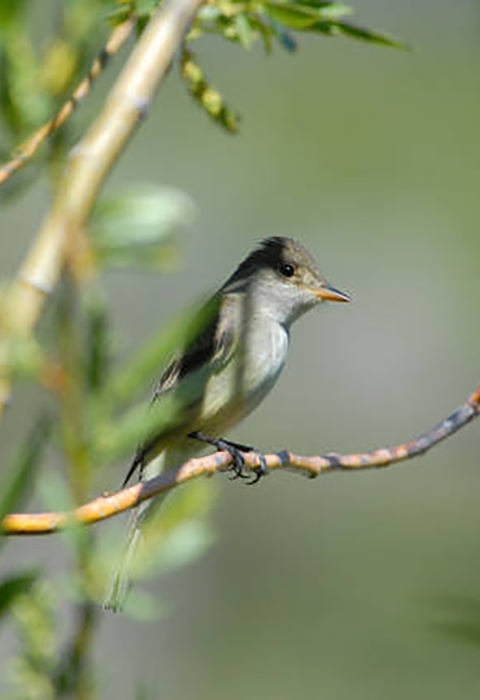Following an extensive review of the southwestern willow flycatcher’s status, the U.S. Fish and Wildlife Service has confirmed the subspecies is a valid, unique taxon, and therefore it will remain protected under the Endangered Species Act (ESA).
The Service was prompted to reconsider this migratory songbird’s endangered status when petitioned by industry groups to delist the subspecies in 2015. The petition presented information challenging the subspecies’ classification and argued that the southwestern willow flycatcher is not a valid subspecies listable under the ESA. In addition the petition asserted the southwestern willow flycatcher was no longer subject to a variety of threats identified when the Service listed the subspecies.
An exhaustive review of the best available scientific information from the U.S. Geological Survey, species experts, state and federal agencies, taxonomic organizations, and the Service’s Conservation Genetics Program’s critical review, led to the conclusion that the southwestern willow flycatcher is a subspecies protectable under the ESA.
Additionally, current threats and the status of the southwestern willow flycatcher were evaluated. The Service’s finding confirms that although some populations have made considerable progress toward recovery, the subspecies and its riparian riparian
Definition of riparian habitat or riparian areas.
Learn more about riparian habitat are experiencing substantial threats; the southwestern willow flycatcher still warrants protection as an endangered species.
The 5¾-inch flycatcher breeds and rears its chicks in late spring and through the summer in dense vegetation along streams, rivers, wetlands, and reservoirs in the arid Southwest. It migrates to Mexico, Central and possibly northern South America for the non-breeding season. The most recent flycatcher range-wide assessment (2012) estimated a population of only 1,629 breeding territories – locations where a male sings to attract a mate.
Today’s finding, including the full status assessment, is available at: https://www.fws.gov/southwest/es/arizona/
Note to Editors: Photo support is available at:
https://digitalmedia.fws.gov/digital/collection/natdiglib/id/6508/rec/2


